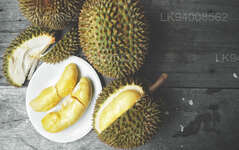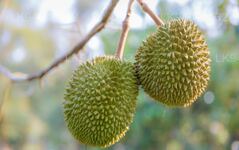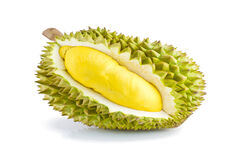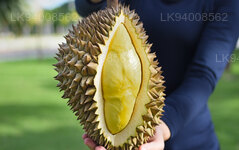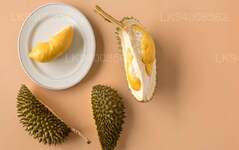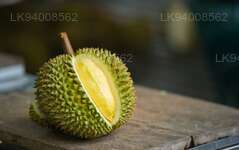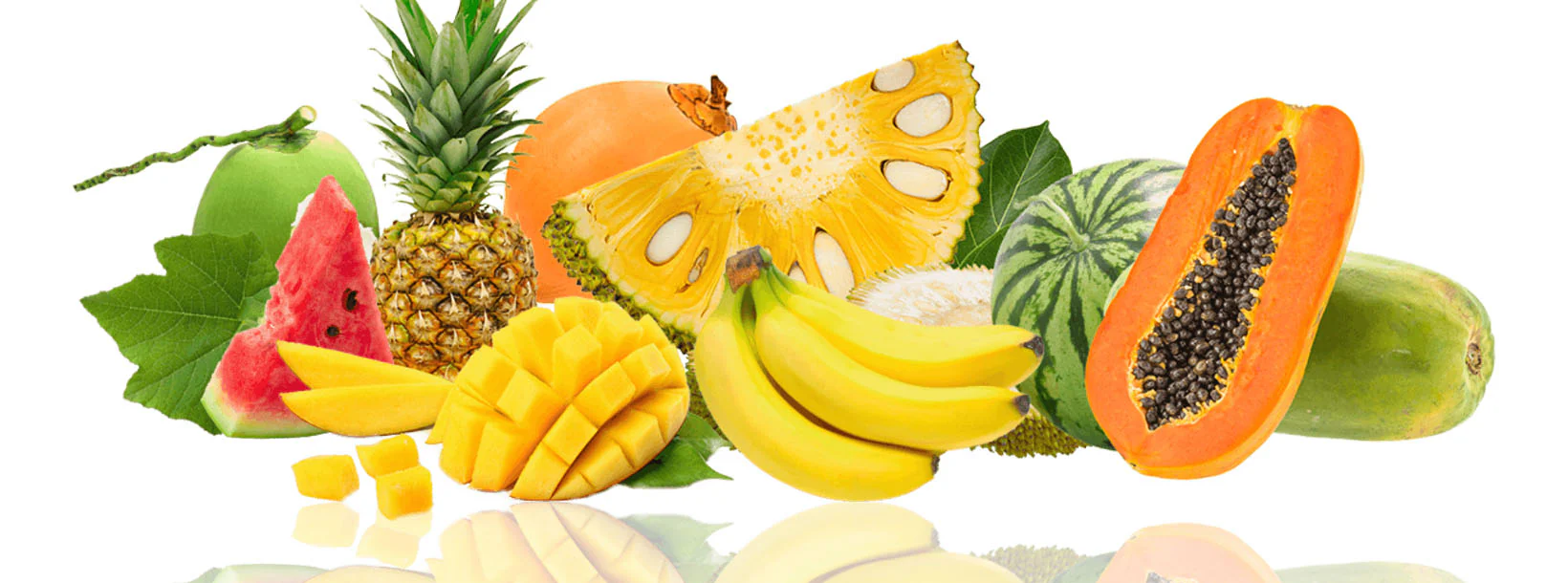
Fruits
Sri Lanka boasts a vibrant array of tropical fruits that reflect its rich agricultural heritage. Among the most beloved is the king coconut (thambili), cherished for its sweet, refreshing water, perfect for quenching thirst in the tropical heat.
Durian (දූරියන්)
Durian fruit is generally slightly oval, about a foot wide and covered in formidable looking spikes. The fruit can weigh between two to seven pounds, and this is heavy enough that in holding it in your hands by the body of the fruit, instead of the stem, it could potentially pierce the skin. However, its otherworldly appearance is dwarfed by another one of its attributes – the smell. Durians have a strong, rank smell that permeates the outer shell and lingers long after the fruit has been removed.
Despite the stench, durian is extremely healthy, even more so than many other fruits. Naturally rich in iron, vitamin C, and potassium, durian improves muscle strength, skin health and even lowers blood pressure. Furthermore, one small durian contains 23g of dietary fiber which is nearly all of your daily nutritional requirement.
The fruit changes significantly over a very short period of time. When it is harvested early, it is almost considered a vegetable because the flesh is hard, easy to handle and bitter, rather than than sweet. People who enjoy eating durian usually prefer the fruit to be over-ripened, when the citrus and sweet flavors are much more prominent. Although the fruit becomes messier by that point with a consistency that is comparable to that of sour cream. Traditionally, durians are eaten after they have fallen to the ground on their own accord, however, durian farms often harvest the fruit earlier in order to ship them overseas.
There’s more than one type
There are around 30 different varieties of durian. The fruit is native to Malaysia, Indonesia and Borneo however today there are durian farms in Sri Lanka, Southern India, Cambodia, Vietnam, Thailand and the southern Chinese island Hainan. Thailand is in fact the biggest exporter of the fruit and home to many durian farms which produce more varieties than the original native locations.
It’s almost impossible to describe the taste and smell
describe it helpfully to someone who has never experienced its unique taste and smell. In 1856, Alfred Russel Wallace sent a letter to Sir William Jackson Hooker describing the fruit as: ‘A rich custard highly flavored with almonds gives the best general idea of it, but there are occasional wafts of flavor that call to mind cream-cheese, onion-sauce, sherry-wine, and other incongruous dishes’. Anthony Bourdain, who actually enjoys eating the stinky fruit, colorfully describes the aftermath of eating it: ‘Your breath will smell as if you’d been French-kissing your dead grandmother’.

